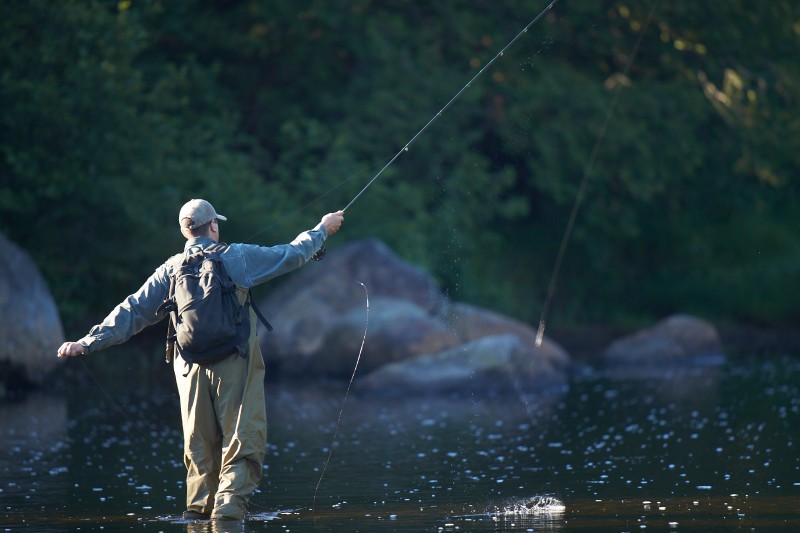
Replacing road culverts with wooden bridges eases trout passage, which benefits anglers.
It’s getting easier for trout to move around in a secluded area of Maine thanks to a number of conservation-minded groups.
The country’s oldest conservation and recreation organization is involved in a project allowing for better fish passage in several streams near Greenville, Maine.
The Appalachian Mountain Club, with assistance from other groups, is engaged in an aquatic habitat enhancement project on its Katahdin Iron Works property in the West Branch of the Pleasant River watershed.
The project calls for the removal of road culverts that were impeding passage of wild or native brook trout. They were replaced with wooden bridges, allowing for the restoration of natural stream flow for the benefit of trout and other aquatic species while also maintaining an existing recreational trail corridor.
Basically, culverts can be too narrow for fish to pass. If the angle is wrong, or the water level too low, fish can get stuck.
In order to spawn and find food, fish need down and upstream access.
“It’s an ongoing effort and we are prioritizing the stream crossings that will have the most impact,” said AMC Maine Policy Director Bryan Wentzell. “We have done 13 projects to date for a total of 11 stream miles connected.”
The undertaking began with a 2011 joint survey with the Maine Department of Inland Fisheries & Wildlife, Maine Audubon, and Trout Unlimited of several locals ponds including 15 of the AMC’s backcountry ponds.
The survey involved recording observations and angling for fish to determine the status of local brook trout and help inform future management decisions, according to Jeff Reardon of Trout Unlimited.
According to a joint statement from those surveying entities, “The state of Maine contains 97 percent of all the wild or native brook trout ponds remaining in the entire country, and has been designated as the last true stronghold for wild brook trout in the eastern U.S.”
Wentzell said four projects are planned or are in progress for the summer of 2014 that will restore an additional four-and-a-half stream miles.
“We continue to assess potential projects for 2015 and beyond,” he said.
At least three ponds on AMC’s conservation and recreation land hold native brook trout.
They are 25-acre Mountain Brook Pond, 20-acre Trout Pond, and 10-acre Baker Pond.
“Wild brook trout are increasingly rare in the Northeast and native brook trout are rarer still,” said Rob Burbank, AMC director of media and public affairs.
AMC’s Maine Wilderness Lodges offer fly-fishing instruction and opportunities.
AMC has ensured, through conservation easements, that its land will remain open to the public for recreation in perpetuity.
The efforts are part of AMC’s Maine Woods Initiative—the organization’s plan for land conservation that combines outdoor recreation, resource protection, sustainable forestry, and community partnerships in the 100-Mile Wilderness region.
As part of the initiative, AMC purchased 37,000 acres of forestland in 2003 and another 29,500 acres in 2009, all of which is open to the public for recreation. With those land purchases came a network of old logging roads and culverts.
The Natural Resources Conservation Service provided technical assistance on engineering and design of the stream crossing projects, and matching financial assistance as a part of the Environmental Quality Incentives Program (EQIP) of the U.S. Department of Agriculture.
AMC’s work is part of a comprehensive approach aimed at enhancing the brook trout fishery on its land and adding recreational opportunities for anglers. In 2010, AMC trail crews improved access to five backcountry trout ponds in a project that was supported by the Land for Maine’s Future program.
More than two dozen backcountry ponds dot the property, most of which contain wild brook trout. These waters also hold brook trout, native brook trout, lake trout, splake, and landlocked salmon. Angling is also available on the West Branch of the Pleasant River.
Image by Dennis Welsh/Courtesy of AMC
 Your Privacy Choices
Your Privacy Choices
 The
The